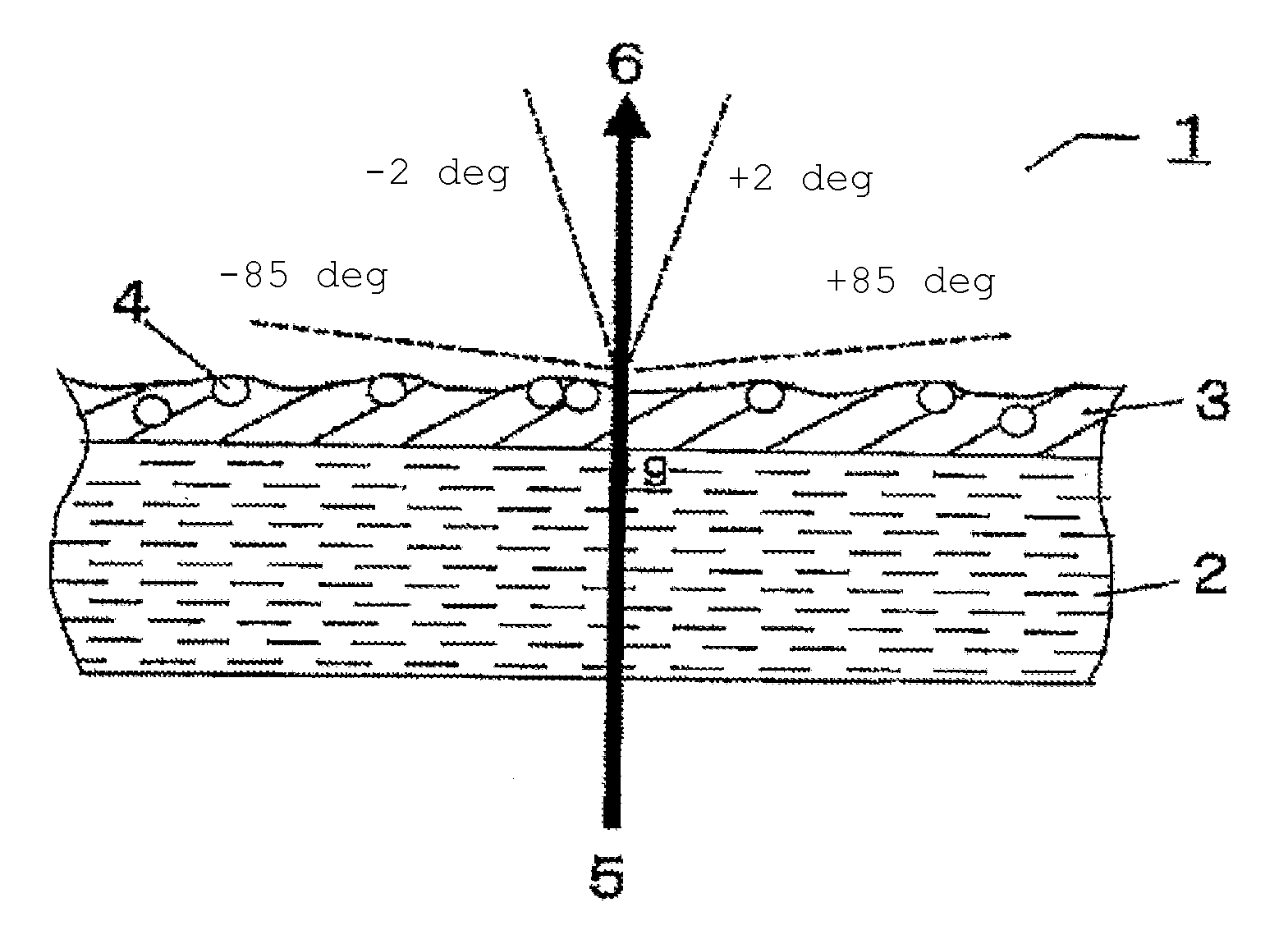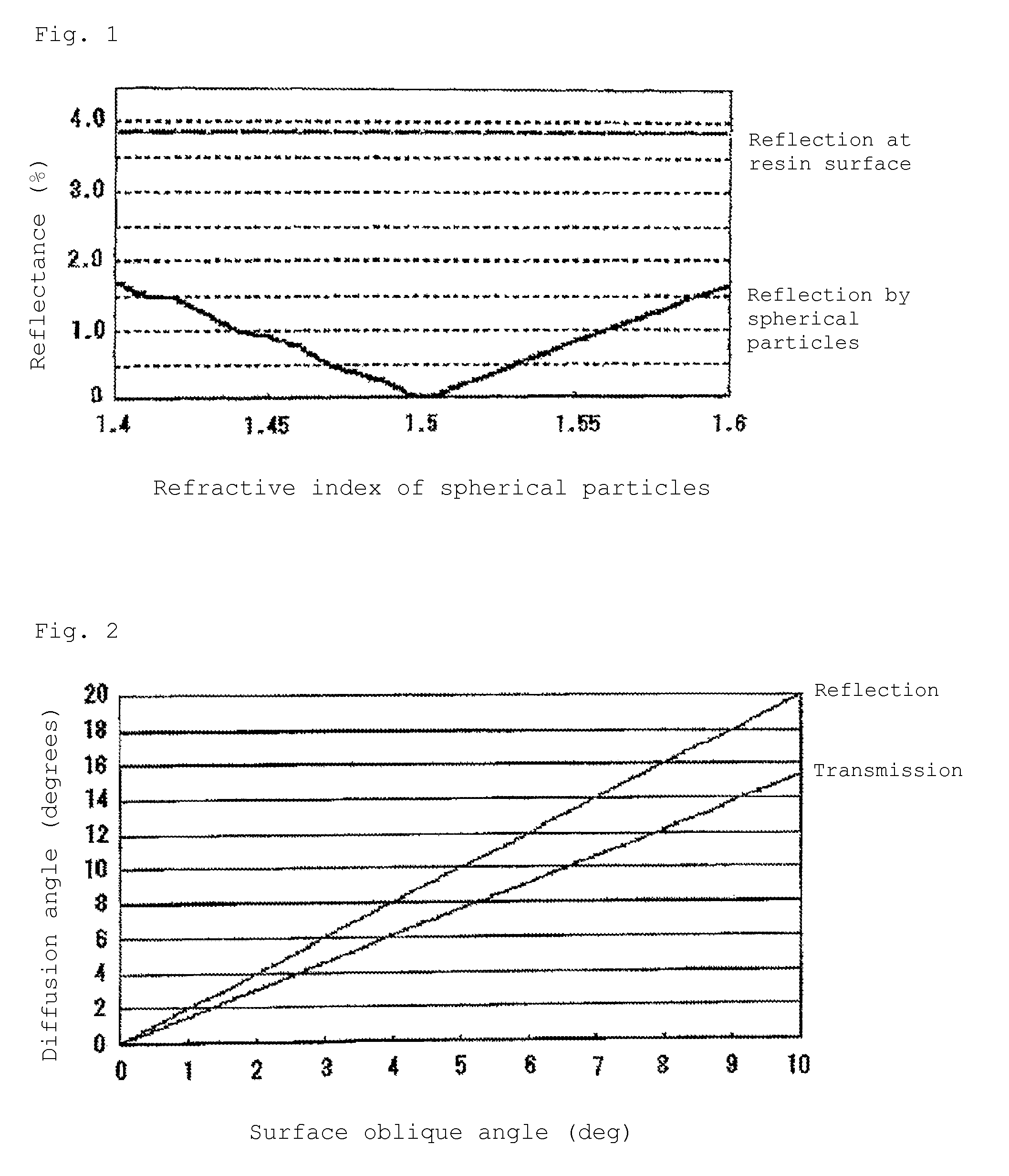Antiglare sheet for image display device, manufacturing method thereof, method of improving black tint and image sharpness of an image display device using said antiglare sheet and suited for use with both moving images and still images
an image display device and antiglare technology, applied in the direction of diffusing elements, instruments, optics, etc., can solve the problems of lowering the contrast, haze value of the coating film, and not always being stably obtained a satisfactory antiglare sheet for an image display device, etc., to improve the vivid complexion and blackness of an image display, improve the vividness of the image, and improve the image crispness. , the effect of excellent vivid complexion
- Summary
- Abstract
- Description
- Claims
- Application Information
AI Technical Summary
Benefits of technology
Problems solved by technology
Method used
Image
Examples
example 1
[0305]Triacetyl cellulose (80 μm thickness, FujiFilm Corp.) was prepared as a transparent base material.
[0306]Next, using a mixture of 60 parts by weight of pentaerythritol tetraacrylate (PETTA, product name: M-450 by Toagosei Co., Ltd.), 10 parts by weight of dipentaerythritol hexaacrylate (DPHA by Nippon Kayaku Co., Ltd.) and 30 parts by weight of isocyanuric acid PO-modified triacrylate (product name: M-313 by Toagosei Co., Ltd.) as a radiation curable translucent resin (translucent resin) (refractive index: 1.51), there were mixed therewith acrylic particles (refractive index: 1.49, mean particle size: 5.0 μm) as organic fine particles (A) (diffusion particles) at 9.0 parts by weight with respect to 100 parts by weight of the radiation curable translucent resin, and then a mixture of toluene and methyl isobutyl ketone (weight ratio: 7:3) as a solvent at 190 parts by weight with respect to 100 parts by weight of the radiation curable translucent resin, the polymerization initiato...
examples 2 to 10
[0309]Antiglare films were fabricated in the same manner as Example 1, except that the components added to the coating solution and the conditions were as listed in Table 1. When using two different particles, the amount of particles (B) added was 30% of the amount of particles (A) added. The impregnation percentage of particles (B) was determined based on the measurement of particles (A).
PUM
| Property | Measurement | Unit |
|---|---|---|
| refractive index | aaaaa | aaaaa |
| thickness | aaaaa | aaaaa |
| haze | aaaaa | aaaaa |
Abstract
Description
Claims
Application Information
 Login to View More
Login to View More - R&D
- Intellectual Property
- Life Sciences
- Materials
- Tech Scout
- Unparalleled Data Quality
- Higher Quality Content
- 60% Fewer Hallucinations
Browse by: Latest US Patents, China's latest patents, Technical Efficacy Thesaurus, Application Domain, Technology Topic, Popular Technical Reports.
© 2025 PatSnap. All rights reserved.Legal|Privacy policy|Modern Slavery Act Transparency Statement|Sitemap|About US| Contact US: help@patsnap.com



